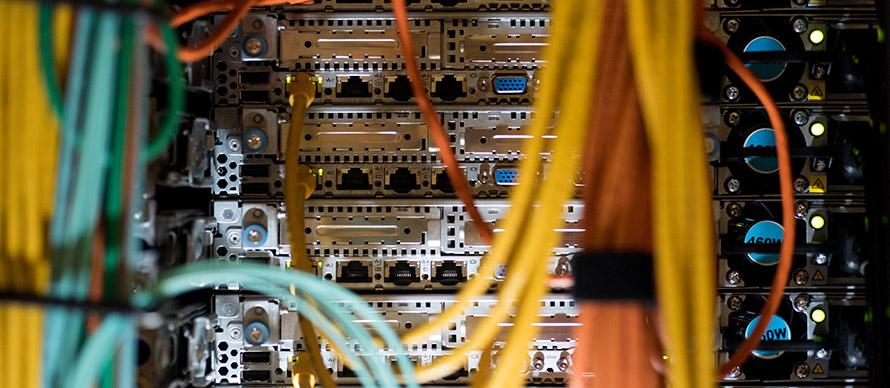
ECE's faculty is organized into 11 technical interest groups (TIGs) that collectively represent the major research thrusts of the School and technical interest areas of courses. These areas are highly interrelated, and many faculty members engage in research in multiple TIGs. Following is a brief description of each TIG, with a bulleted list of their major areas of research.
Bioegineering
Bioengineering applies engineering principles to study, manipulate, and control biological processes. In this area, mathematical, physical, and engineering concepts are developed and applied to solve problems in medicine and biology through hardware and software including electronics, sensors, engineering systems, data processing, computational imaging, machine learning, and artificial intelligence.
- Bioelectronics, Biosensors, and BioMEMS
- Neuroengineering, Neuromodulation, and Neural Control
- Medical Imaging and Sensing, Devices, and Instrumentation
- Diagnostic and Therapeutic Ultrasound
- Optical Imaging and Microscopy, Biophotonics
- Computational Imaging and Signal/Image Processing
- Bio- and Neuro-inspired Signal Processing
- Biological and Computational Vision, Machine Learning
Computer Systems and Software
Computer Systems and Software creates novel computing environments for edge, cloud, and high-performance computing. Designs span low-power, reconfigurable microarchitectures to integrated hardware/software systems to large-scale distributed software and internetworked devices that communicate, learn, and intelligently adapt to the environment. Activities focus on optimizing cross-cutting characteristics, such as power/energy consumption, resiliency, and security.
(text and background only visible when logged in)
- Computer Architecture
- Embedded Systems
- Computer Networks and Internetworking
- Distributed and Dependable Systems
- FPGAs and Reconfigurable Computing
- Computer System and Network Security
- Hardware/Software Co-design
- Cloud and Edge Computing
Digital Signal Processing
Digital Signal Processing (DSP) involves the representation, processing, modeling, and analysis of signals, information, and physical phenomena. DSP interprets the captured data and enables visualization, analysis, manipulation, and control. DSP lies at the core of modern artificial intelligence (AI) and machine learning algorithms.
(text and background only visible when logged in)
- DSP and Machine Learning Theory
- High-dimensional Statistics
- Conversational Systems
- Robust and Explainable AI
- Active and Reinforcement Learning
- Image, Speech, Audio, and Video Processing and Learning
- Radar and Array Processing
Electrical Energy
Electrical Energy is primarily concerned with meeting the demand for electric energy in a safe, reliable, secure, cost-effective, and environmentally friendly manner.
- Power System Protection, Control, Optimization, and Automation
- Renewable Generation, Wind, Photovoltaics (PV), and Other
- Power Electronics
- Power System Simulation and Visualization
- High Voltage Engineering
- Energy System Cybersecurity
- Motors, Generators, and Power Conversion
- Silicon-based Microchips and Microsystems
Electromagnetics
Electromagnetics includes everything about radio waves: their generation, propagation, and interactions with materials, devices, and systems. This includes:
- Technology for Microwave, MM-wave, and Terahertz Frequencies
- Detection of Obscured Targets
- Space Science and Satellite Communications
- Radar, Communication, and Navigation
- Novel Antenna Design and Analysis
- EM Wave Propagation Modeling
- Signal Integrity in High-speed Circuits
- Wireless Networks and Security
Electronic Design and Applications
Electronic Design and Applications focuses on device and integrated circuit fabrication, circuit and system design and simulation, and instrumentation and testing techniques.
- MEMS Devices and Circuits
- Analog Electronics and VLSI
- Radio-Frequency (Wireless) Integrated Circuits (RFIC)
- mmWave and THz Circuits for Remote Sensing and Communications
- High-speed Mixed-signal Systems
- Biomedical and Wearable Electronics
- Sensing Microsystems and Energy Harvesting
- Power-management Integrated Circuits
Nanotechnology
Nanotechnology is concerned with the emerging of enabling nano-scale materials and devices, including the design, analysis, and realization of enabling systems.
- Nano Devices and Systems
- Photovoltaics and Electro-optical Systems
- Integrated Sensor Systems
- Biomedical Applications
- Next Generation Electronic Packaging and Integration
- Compound Semiconductor Devices and Systems
Optics and Photonics
Optics and Photonics focuses on the exploitation of light waves and photons for communication, signal processing, imaging, sensing, computing, lighting, and energy harvesting.
- Optical Communication Networks
- Imaging and Display
- Nonlinear Optics
- Integrated Photonics and Optoelectronics
- Diffractive and Holographic Optics
- Nanophotonics and Nanoplasmonics
- Metamaterials and Metasurfaces
- Organic Photonics and Photovoltaics
Systems and Controls
Systems and Controls is concerned with mathematical and computational techniques for modeling, estimation, and control of systems and processes.
- Robotics and Autonomous Systems
- Cyber Physical Systems
- Machine Learning
- Mathematical Systems Theory
- Computer Vision
Telecommunications
Telecommunications focuses on the characterization, representation, transmission, storage, and networking of information over various media including space, optical fiber, and cable.
Learn More About Telecommunications
- Wireless Communications and Networking
- Communication Theory
- Information Theory and Adaptive Systems
- Multimedia Networking
- Inter-networking, Network Management, and Network Security
- Optical Networks
VLSI Systems and Digital Design
VLSI Systems and Digital Design involves designing and testing complex digital and mixed-signal electronic systems. These techniques optimize power, performance, and reliability metrics across a wide range of applications.
- Design of Ultra Low Power Circuits and Systems
- Embedded Systems and Hardware-software Codesign
- Microarchitecture and Memory Design for Performance, Power, and Reliability
- Design and Test of Systems on Chips (SOCs) and Systems in Packages (SiPs)
- Low-power/High-speed Interconnect and Design Automation for Physical Design
- VLSI Testing and Fault Tolerant Computing
- Data Acquisition Systems for Vision/Sensing Applications
- Self-tuning/Self-calibrating Circuits for Wired and Wireless Communications
- Design of Nanotechnology and Other Emerging Computational Fabrics